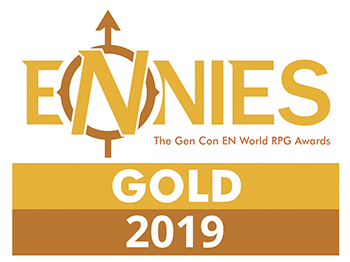Karrakin Trade Baronies
The Crown of Earth and Stars
A federation of the largest and most powerful monarchies in known space, the Karrakin barons claim to represent the oldest unbroken civilization in human history. Seeded prior to the Fall and isolated after, the rulers of Karrakis were lost and forgotten to Earth for thousands of years, free to expand and develop a spacefaring civilization even while the rest of humanity struggled to survive the Fall, the dark ages, and the Little Wars. By the time Union reached back out into space, the barons had spread to worlds throughout their system, designed a functioning – if cumbersome – system of interplanetary administration without the benefit of the omninet or the blink, and developed their own enormous network of machine minds to assist in the functioning of their dynastic monarchy.
Karrakis has the distinction of being one of the only pre-Fall colonies to survive the withering effects of the dark ages, founded by colonists from the generation ship Apollo. Any others, to the best of Union’s knowledge, were spawned from generation ships that were launched from a dying Cradle in the midst of the Fall. The Baronies, despite its status now as a member state of Union, carries a fierce cultural independence that often causes friction between Union and Baronic state counterparts. The Karrakin people venerate Karrakis, not Cradle — which they still call Earth — as the home of their ancestors, and as such have no widespread cultural desire to control and rule the galaxy; in fact, they see Karrakis, or Throne Karrakis, as the jewel of humanity’s domane — after all, their history is marked by terrestrial and interstellar wars for its control.
Now split into many houses by the effects of relativistic travel and multi-system distribution, the Baronies is comprised of a massive, byzantine system of titles, hereditary claims, and territories. There are thousands of minor houses, each swearing fealty to their world’s Major House, which in turn guarantees and is guaranteed by the monarchal power of the Prime Baron.
Structure
Since the beginning of the Federal Karrakin Monarchy – the current system by which the Baronies is governed – the minor houses of the Baronies have been further organized into global federations subordinate to the Prime Baron. Each world of the Baronies was assigned to a major house, the name of which was chosen independent of any family history. These major houses function as political parties, rather than hereditary organizations.
The current ruler of the Karrakin Trade Baronies is Prime Baron Karra-Bem of House Karraka. Since integration, all Prime Barons have been guaranteed a seat on CentComm, and Karra-Bem is an active participant. A thorn in the side of many committee members to the left of the Fourth Column and a powerful ally to those in her favour, she has worked hard to maintain peace in Cradle–Baronic space.
Each minor house is ruled by a baron, and there is a de facto dynastic inheritance among the top tier of these houses. Barons and other nobles bear titles based on their position within a major house in addition to their personal and family names.
The use of house livery is common in the Baronies. Houses each have a unique iconography, but often share elements with related houses. Minor houses, merchant guilds, free companies, house companies, and so on will incorporate elements from the major house to which they owe allegiance. The prime baron is understood to have dominion over all houses, and thus has no need to make a particular mark on the livery of any, except in the case of the prime baron’s honour guards. All units, retainers, officers, ships, and so on within the honour guard wear the Royal Prime, a deep, earthy red elsewhere called Karrakin Maroon. Bearing the Royal Prime is considered a singular honour.
The introduction of another political battlefield – influence in the Central Committee – has proven interesting, but most of the houses still view the prime barony as the most prestigious throne on which to sit, and their own ancestral home, Karrakis, as the galaxy’s prize.
Assets
The Trade Barons have vast material wealth and supply Union with steady, predictable raw materials — this lets them get away with questionable human rights violations, and only furthers internal Committee tension in Union.
The Baronies controls some of the largest single-party mining, harvesting, and natural resource endeavours in the galaxy – operations that certainly enable the prosperity of the Galactic Core. The operations overseen by the Baronies are enormous in scale and ambition, eclipsed only by Union and rivalled only by the Aun. The major houses – the largest among them – have the capacity to undertake utterly massive mega-engineering projects, from tearing apart whole stars for their energy to cracking newly formed worlds for their minerals, transforming entire colonial ventures into planet-sized agrifactories, and sucking the atmospheres from gas giants.
History
The Karrakin Trade Barons are the oldest established non-Cradle culture. Founded by colonists of the generations ship Apollo concurrent to the Fall on Cradle, theirs is a civilization around ten thousand years old, with ancient ruins and fallen monuments hidden throughout their homeworld, Karrakis, and a deep cultural history with mythes, legends, and heroes.
Before the blink, before omninet, before manna, before Union, the Karrakin people had reached out and colonized terrestrial worlds and moons both in their star system and in neighboring clusters. They were the first humans to fight interplanetary and interstellar wars, coordinating forces across a fractured empire at sublight speeds with conventional communications technology. By the time Union constituted itself in 0u, Karrakis had been a globalized world for five thousand years — indeed, Union wouldn’t even make contact with Karrakis for another couple thousand years beyond that.
The Karrakin Trade Barons are the newest iteration of a federal interplanetary government that has long coordinated the Karrakin peoples and diaspora. They have organized their noble worlds into Houses, and each House has representation on the Baronic Council, which is facilitated by a single Prime Baron. Prior to this federal structure, the Karrakin peoples and their diaspora had been ruled by an ignoble New Federation; before that was the last of the Imperial Karakin Dynasties — called Annorums — the Annorum Tyrannus. Prior to the Annorum Tyrannus was the Annorum Passacaglia. Prior to the Annorum Passacaglia were various early minor kings who squabbled over Karrakis pre-unification.
Foreign Relations
The barons are canny profiteers by Union’s standards, doing business out among the Diaspora often in opposition to the interests of the various corpro-states on the rise since the Second Expansion Period; most notably against the imperial aims of Harrison Armory. Internal conflict among minor houses is common enough, but guided by strict cultural codes. Internal conflicts tend to be limited, ceremonial or small-scale engagements. Baronic culture places great import on the fighting ability of nobles; territorial disputes are often settled after brief engagements in agreed-upon locations, or by single combat between nominated champions. These duels are, in the modern era, usually fought to first blood, rather than death, though to-the-death challenges remain legal, if rare.
The Barons have a bloody history of war and conflict with Harrison Armory: first was the Interest War that dealt them a costly stalemate at the hands of Harrison I. In the narrative present, they’re wrestling with Harrison Armory for control over a colonial expanse, the Dawnline Shore. While there has been no outright conflict, both sides are funding proxies, and open sectarian combat has already enveloped at least one world.
Education
All Baronic nobles, gendered or not, are trained rigorously in martial, religious, and cultural rituals from a young age. By custom, noble youth must master the pen, the sword, and proper etiquette in equal measure to be considered enlightened, strong leaders capable of bringing glory, honour, wealth, and acclaim to their houses. The social order is rigid in the Baronies, with upward class mobility only possible through the grace of higher nobles, who all compete with each other for the prestige of having the largest and most successful house. As such, barons and their scions must be trained rigorously. Houses undertake all kinds of measures to get ahead of their rivals. For those of noble birth, this is a fundamental aspect of life – part of the grand game, a test of one’s divine and inherent right to rule.
Type
Geopolitical, Barony
Capital
Demonym
Karrakin
Government System
Monarchy, Absolute
Power Structure
Federation
Economic System
Post-scarcity economy
Parent Organization
Controlled Territories
Neighboring Nations
Remove these ads. Join the Worldbuilders Guild









Comments